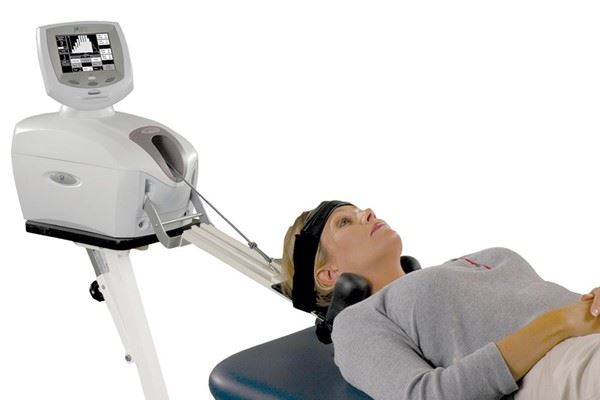-
Home
-
Traction Equipment for Back and Neck Pain Relief
Traction Equipment for Back and Neck Pain Relief
April 11, 2024
 Neck pain can be a debilitating condition that affects millions of people worldwide. Whether it's due to poor posture, injury, or underlying medical conditions, finding relief is essential for maintaining a good quality of life. One popular method for alleviating neck pain is through the use of traction equipment. In this article, we will explore what traction equipment is, the devices used in traction, various types, and their effectiveness in providing neck pain relief.
Neck pain can be a debilitating condition that affects millions of people worldwide. Whether it's due to poor posture, injury, or underlying medical conditions, finding relief is essential for maintaining a good quality of life. One popular method for alleviating neck pain is through the use of traction equipment. In this article, we will explore what traction equipment is, the devices used in traction, various types, and their effectiveness in providing neck pain relief.
What is Traction Equipment?
Traction equipment refers to devices designed to apply a pulling force to the head, neck, or spine to create space between the vertebrae and alleviate pressure on the nerves and discs. This can help decrease pain and improve overall function in individuals suffering from neck pain.
How Do Neck Traction Devices Work?
Neck traction devices work by gently pulling the head away from the neck, creating a separation between the vertebrae. This process reduces the pressure on the intervertebral discs and nerve roots, which can help alleviate pain, stiffness, and muscle spasms. Traction also increases blood flow to the neck muscles and spinal structures, facilitating the healing process.
What Conditions Can Traction Be Used to Treat?
Traction equipment is commonly used to treat a variety of conditions related to the spine, especially those involving the neck (cervical spine) and lower back (lumbar spine). Some of the conditions that are commonly treated with traction equipment include:
- Herniated or Bulging Discs: Traction can help reduce the pressure on the affected disc, allowing it to return to its normal position and relieve pressure on the surrounding nerves.
- Pinched Nerves: By decompressing the spine, traction can relieve pressure on pinched nerves, which can alleviate pain, numbness, and weakness.
- Neck Pain: Traction can be effective in treating neck pain caused by muscle spasms, arthritis, or other conditions that lead to stiffness and discomfort.
- Cervical Spondylosis: This age-related condition involves the wear and tear of the cervical spine, leading to neck stiffness and pain. Traction can help alleviate these symptoms by decompressing the cervical vertebrae.
- Whiplash: Traction can be used as part of the rehabilitation process for whiplash injuries, helping to gently stretch and realign the neck muscles and vertebrae.
- Sciatica: For sciatica caused by spinal issues such as herniated discs or spinal stenosis, lumbar traction can help relieve pressure on the sciatic nerve.
- Degenerative Disc Disease: Traction can help alleviate pain and improve mobility in individuals with degenerative disc disease by reducing the pressure on the affected discs.
What Devices Are Used in Traction?
There are several types of traction devices available, each with unique features and mechanisms. The most common types of traction equipment are over-the-door devices, inflatable neck collars, mechanical devices, and posture pumps.
- Over-the-Door Traction Devices consist of a harness attached to a pulley system, which is hung over a door. The patient sits in a chair and places the harness around their head, and the pulley system applies a gentle pulling force.
- Inflatable Neck Collars, also known as cervical traction collars, are worn around the neck and inflated using a hand pump. As the collar inflates, it elongates the neck, providing traction.
- Mechanical Traction Devices use a mechanical system to apply a precise amount of traction force to the neck. They can be either manual or motorized. Mechanical traction equipment is often found in physical therapy clinics, but devices are also available for at-home use.
- Posture Pumps not only provide traction but also help in correcting neck posture. They typically consist of a curved platform on which the patient lies down and a mechanism to apply an upward force to the neck.
What is the Best Traction Device for the Neck?
The best traction device for your neck will depend on your individual needs and preferences. Some individuals may benefit from portable cervical traction units that they can use at home, while others may require more advanced machines found in physiotherapy clinics. It's essential to consult with a healthcare provider before starting any new treatment regimen involving traction equipment.
How Often Should You Use a Traction Device?
The frequency of using a traction device will vary depending on your condition and treatment plan. Some individuals may benefit from daily sessions of 10-15 minutes, while others may only need occasional use when experiencing flare-ups of pain. Always follow the recommendations provided by your healthcare provider to ensure safe and effective treatment.
What is the Difference Between Traction and Decompression of the Neck?
Traction involves applying force or tension to stretch out tissues in order to alleviate pressure on nerve roots or discs. Decompression refers specifically to relieving pressure within spinal discs by creating space between vertebrae. Decompression therapy is often used for more severe conditions, such as herniated discs or spinal stenosis, and may involve a series of treatments over several weeks.
Traction equipment offers a non-invasive and effective way to manage neck pain and improve overall spine health. By understanding how these devices work, selecting the right one for your needs, and following proper guidelines for use, you can experience significant relief from chronic discomfort. Consult with your healthcare provider to explore whether incorporating traction equipment into your treatment plan could benefit you.